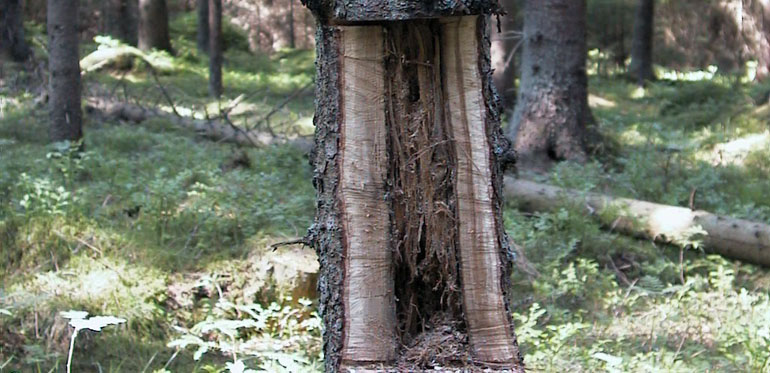The true efficacy from practical stump treatments against Heterobasidion root rot in practice
The overall aim of the project is to reveal the true efficacy from practical stump treatment in regular forest operations.

Climate change forces countries to change to a more sustainable bioeconomy. Forests provide a fundamental contribution to this sustainable future. In Sweden, forestry has long been an integrated essential part of the national economy; however there are some biological threats to sustainable wood production. Root rot is not only fatal to the economy of individual land owners but also constrains the ability to meet the needs of a diverse range of sustainably produced products from forests due to its non-selective nature for degrading wood of trees at any age. For about 25 years, forest managers in Sweden have been treating stumps against spore infections of Heterobasidion root rot following harvesting to minimize losses due to decay, growth reduction and windthrow. It has though recently become evident that not all managers trust the efficacy from stump treatment.
In this project we aim to evaluate the true efficacy for stump treatment in practice by conducting extensive sampling of a large number of field sites in a chronological time sequence to assess the treatment performance (stump surface coverage and treatment viability) and its effect on establishment of Heterobasidion spore infections on the stumps.
The project builds on previous work and utilizes traditional sampling of wood discs and modern molecular techniques to quantify presence of Heterobasidion and the specific genotype of Phlebiopsis gigantea (manufactured as RotstopS). The novelty of this study lies in it being the first to realistically provide “proof-of-concept” based on regular forest operations.
The results of this work are critical to be able to provide concrete evidence of field efficacy and credible treatment recommendations. This work specifically addresses stakeholder needs and concerns, and has immense importance for the sector as a whole if we are to continue to encourage expanded use of stump treatment in practice, and consequently promote sustainable forestry in Sweden.
Rapporter och publikationer
Ämne: Skador på skog
Startår: 2017


